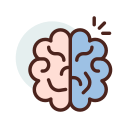Karya Tulis Ilmiah
ANALISIS VARIASI PENYUDUTAN ARAH SINAR PADA PROYEKSI ANTERO POSTERIOR PEMERIKSAAN PEDIS TERHADAP OSSA TARSAL
This research aims to describe the radiographic technique for examining the ossa pedis using variations in central ray angulation at 0º, 5º, 10º, and 15º cranially in the anteroposterior (AP) projection, and to analyse the resulting image quality based on the anatomical information visualized. The research was conducted at Radiologic Technology Laboratory of Health Polytechnic of Health Ministry - Jakarta II, Department of Radiodiagnostic and Radiotherapy Technology, starting from April up to May 2025. As for the method used, it was qualitative method with descriptive approach, with data obtained through among the other things literature review and experimental procedures. rnThe population in this research consisted of all radiographers at Pasar Minggu Regional General Hospital (RSUD Pasar Minggu) and Bantar Gebang Regional General Hospital (RSUD Bantar Gebang), totalling 13 and 8 individuals respectively. From this group, 15 radiographers with a minimum of five years of work experience were selected as samples to evaluate the radiographic images based on the clarity of anatomical structures and the degree of image distortion. As for the instruments used in this study, they included evaluation sheets and questionnaires. rnFurthermore, data were obtained from literature review references and the results of questionnaire evaluations, which were then analysed using statistical methods, including weighted mean and standard deviation. The findings showed that a 10º cranial angulation produced the best radiographic images in terms of displaying the anatomical details of the tarsal bones, with an average score of 3.3. At this angle, joint spaces and anatomical structures were the clearest and most detailed. In contrast, the 15º cranial angle yielded the lowest result, with an average score of 2.4. Regarding image distortion, the 0º perpendicular angle was rated as having the least distortion, with an average score of 3.3, while the 15º cranial angle again received the lowest rating with an average score of 2.3.
Ketersediaan
Informasi Detail
- Judul Seri
-
-
- No. Panggil
-
001.43 NIK a
- Penerbit
- Jakarta : Jurusan Teknik Radiodiagnostik dan Radioterapi., 2025
- Deskripsi Fisik
-
xiv + 0pages: illustration; 21 x 29cm.
- Bahasa
-
Indonesia
- ISBN/ISSN
-
-
- Klasifikasi
-
001.43
- Tipe Isi
-
-
- Tipe Media
-
-
- Tipe Pembawa
-
-
- Edisi
-
-
- Subjek
- Info Detail Spesifik
-
-
- Pernyataan Tanggungjawab
-
NIken Triani
Versi lain/terkait
Tidak tersedia versi lain
Lampiran Berkas
Komentar
Anda harus masuk sebelum memberikan komentar


 Karya Umum
Karya Umum  Filsafat
Filsafat  Agama
Agama  Ilmu-ilmu Sosial
Ilmu-ilmu Sosial  Bahasa
Bahasa  Ilmu-ilmu Murni
Ilmu-ilmu Murni  Ilmu-ilmu Terapan
Ilmu-ilmu Terapan  Kesenian, Hiburan, dan Olahraga
Kesenian, Hiburan, dan Olahraga  Kesusastraan
Kesusastraan  Geografi dan Sejarah
Geografi dan Sejarah